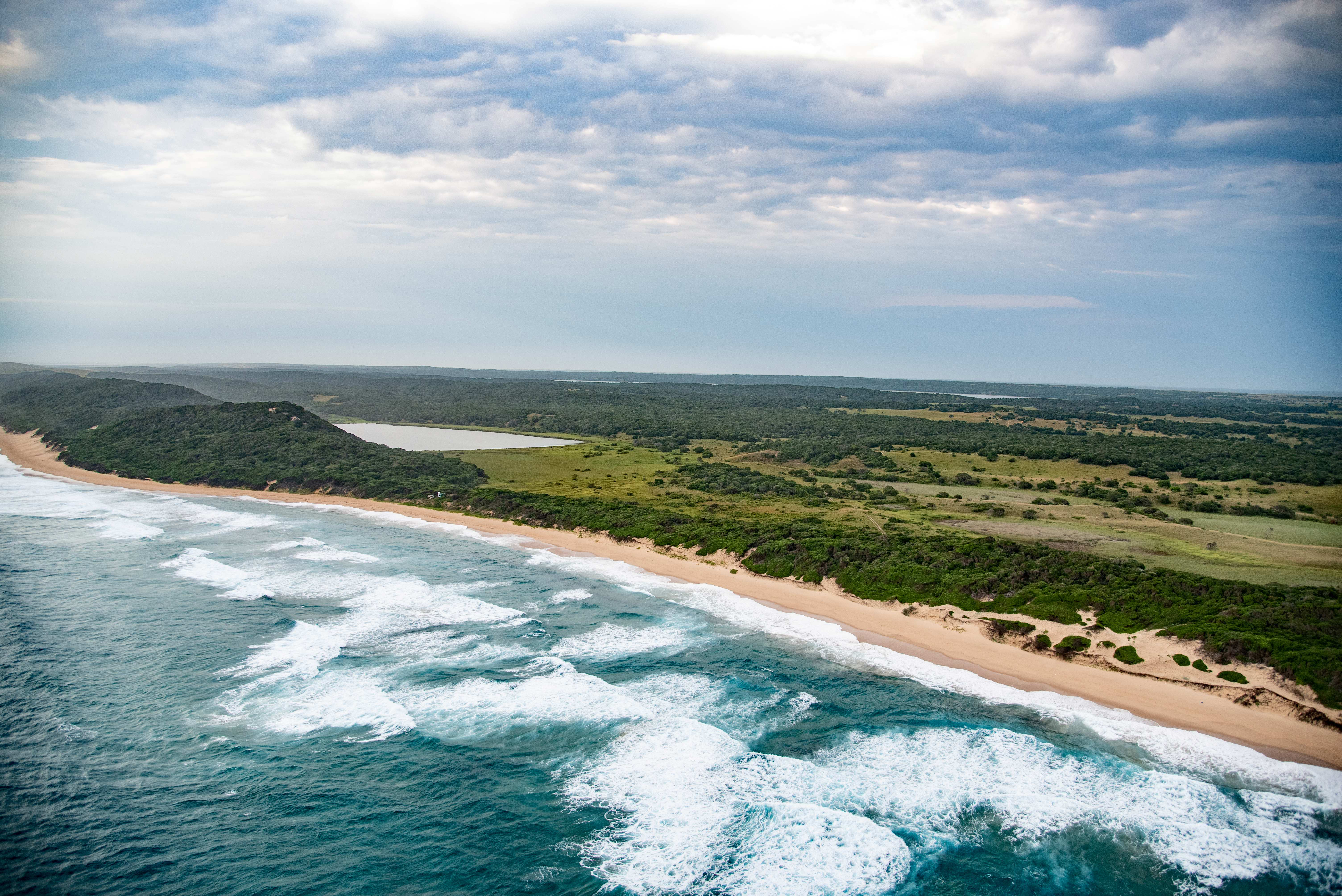The proposal to join up the marine and coastal landscapes of the iSimangaliso Wetlands Park and the Maputo National Park into a single heritage area will be considered in Paris next month at a meeting of the World Heritage Committee.
The committee is part of a United Nations convention to safeguard places considered to have “outstanding universal value”.
In a draft decision put forward for approval at the 6-16 July meeting, the committee describes this area as both “scenically beautiful” and “one of the most outstanding natural wetland and coastal sites of Africa”.
But there is also a dark cloud hovering above this idyllic horizon – a proposal to build a new deep-water coal export harbour and 30,000-hectare industrial zone, pretty much in the middle of the new heritage zone.
If it goes ahead, the plan involves building a new or upgraded 1,100km railway link from Botswana, passing through Zimbabwe and then connecting to a proposed deep-water harbour at Ponta Techobanine to enable the export of coal and other resources to China and other nations.
/file/dailymaverick/wp-content/uploads/2025/06/Maputo-5-image-Peace-Parks-Foundation.jpg)
/file/dailymaverick/wp-content/uploads/2025/06/maputo-4-image-Peace-Parks-Foundation.jpg)
Mozambique has, nevertheless, now designated a large 150,000ha heritage zone that includes a narrow strip of coastal water extending from the South African borderline to Maputo Bay.
The protected zone also includes the former Maputo Elephant Reserve, the Machangulo Peninsula and Inhaca and Portuguese islands – but excludes a large chunk of land between Ponta do Ouro and Ponta Techobanine (see map). It has also designated an extensive “buffer zone” covering almost 470,000ha.
/file/dailymaverick/wp-content/uploads/2025/06/maputo-2-locator-map-image-Peace-Parks-Foundation.jpg)
Potential ‘challenge’
The Techobanine harbour plan is acknowledged as a potential “challenge” in the 192-page World Heritage Site nomination document prepared jointly by the Mozambican government, the state conservation agency (ANAC) and the iSimangaliso Wetlands Park Authority.
This document also suggests that there are “currently no plans to pursue this development”, while a separate document prepared by the World Heritage Committee “notes with appreciation the commitment by (Mozambique) to ensuring that the potential deep sea Techobanine Port Complex will not proceed within the property”.
The document further urges Mozambique to continue monitoring the status of the proposed harbour project and to report on any potential impacts on the heritage site “even if it is located outside its boundaries”.
Yet, just three months ago, the African Development Bank announced that it would provide a grant of $3-million to fund a comprehensive feasibility study for the development of the Techobanine port and railway project as part of a broader development corridor linking Mozambique, Zimbabwe and Botswana.
/file/dailymaverick/wp-content/uploads/2025/06/maputo-3-image-Peace-Parks-Foundation.jpg)
Migration route
Significantly, the new world heritage boundary nomination also excludes the Futi Corridor, a narrow strip of riverine land that is regarded as a vital part of restoring elephant migration paths between the two nations. However, the corridor remains part of the domestically protected Maputo National Park.
This historical migration route was effectively severed during the late 1980s when a fence was built to protect some of these elephants within the boundaries of South Africa’s Tembe Elephant Park. The small remaining population of elephants in the Maputo Special Reserve has since multiplied significantly, and the park has also been restocked with several other wildlife species with support from the Peace Parks Foundation.
/file/dailymaverick/wp-content/uploads/2025/06/maputo-6-image-Peace-Parks-Foundation.jpg)
/file/dailymaverick/wp-content/uploads/2025/06/maputo-7-image-Peace-Parks-Foundation.jpg)
The foundation has a 15-year co-management agreement with Mozambique’s ANAC conservation agency and – with support from the World Bank’s Mozbio Programme – more than 5,000 wild animals, including, buffalo, giraffe, impala, kudu, nyala, waterbuck, warthog, oribi, eland, blue wildebeest and zebra, have been translocated to the Maputo reserve over the past decade to boost tourism.
Though the proposed heritage park excludes the Futi Corridor and land south of Ponta Techobanine, the inclusion of other territory means that the combined South African and Mozambican heritage site would soon cover about 400,000ha.
This will include a wide range of near-pristine coral reefs, long sandy beaches, some of the highest coastal dunes in the world, inland lake systems, swamps, mangroves and seagrass beds.
The nomination documents describe the Maputo National Park as “relatively secure” and notes that “it is essential to ensure that any development and tourism-related projects within and beyond the boundaries of the property are carefully considered and regulated to ensure compatibility with the maintenance of Outstanding Universal Value in the long-term”.
“As the Government of Mozambique, we fully endorse this nomination, and are grateful for our shared history of regional willingness to advance new models of conservation-beyond-boundaries in the service of sustainable development.”
Tourism boost
Globally there are just more than 1,200 World Heritage Sites which encompass both natural and cultural treasures.
Apart from spectacular natural areas such as the Serengeti, Yellowstone, Victoria Falls and the Drakensberg mountains, the sites also include historical and cultural monuments such as Stonehenge, the Acropolis of Athens, Great Zimbabwe, the Tower of London, the Great Wall of China, the Pyramids of Egypt and the Taj Mahal. South Africa has 12 of these sites.
Due to their global prestige and visibility, World Heritage Sites can help to boost tourism income and also raise public awareness about the need for their protection. Countries can also receive financial assistance and expert advice from the World Heritage Committee to support the preservation of their designated sites.
Three meetings will be held in Manguzi, Mbazwana and St Lucia in northern KwaZulu-Natal this week (23 to 25 July) as part of a public participation process. For more information contact Siqiniseko Gumbi at info@ndandali.co.za or 083 944 1451. DM




 The southern coastline of Mozambique has been described as one of the most scenically beautiful and outstanding coastal sites in Africa. (Photo: Peace Parks Foundation)
The southern coastline of Mozambique has been described as one of the most scenically beautiful and outstanding coastal sites in Africa. (Photo: Peace Parks Foundation)